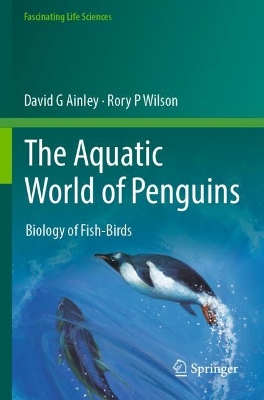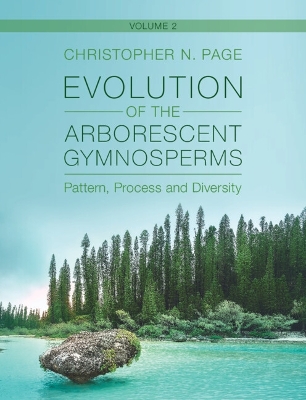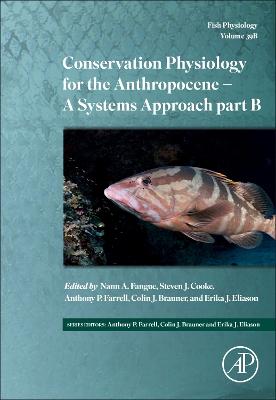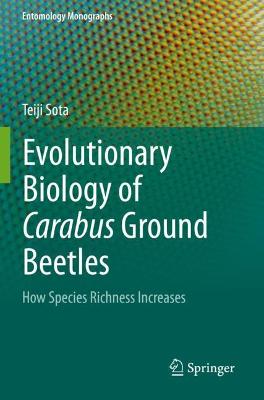Aquatic World of Penguins
 portes grátis
portes grátis
Aquatic World of Penguins
Biology of Fish-Birds
Wilson, Rory P; Ainley, David G
Springer International Publishing AG
11/2024
567
Mole
9783031339929
15 a 20 dias
Descrição não disponível.
PREFACE AND ACKNOWLEDGEMENTS.- SECTION I - IN THE BEGINNING.- CHAPTER 1. WADING IN ? INTRODUCTION TO THE FISH-BIRD.- General Discussion of Penguins and Substance of the Book.- An Impressive Number of Penguin Species: Evolution of Their Unique Capabilities.- Penguin Species Radiation and the Ontogeny of Their Watery World.- Penguin Evolution: Body Size and Climate.- Penguin Evolution: Radiation into Vacant Niches.- Penguin Evolution: Body Size and Crossing the Sea-Land Boundary.- CHAPTER 2. LAND AHOY! A TIRESOME BUSINESS.- Crossing the Land-Ocean Interface is Affected by Body Size.- Why and How Often do Penguins Come Ashore?.- Tying Land-life to the At-sea Life of Fish-Birds: Foraging and Breeding.- Success Vary with Prey Availability.- Molt ?Necessary, Brief Respite from the Sea.- SECTION II - PENGUIN MARINE HAUNTS AND FOOD HABITS.- CHAPTER 3.FISH-BIRDS AT HOME IN THEIR OCEAN HABITATS.- Oceanographic Fronts and Water Masses Important to Penguins: General Discussion.- Penguins Require High Productivity Water Masses.- Large Scale: Oceanographic Boundaries and At-sea Distributions of Penguins.- Southern Boundary of the Antarctic Circumpolar Current.- Emperor and King penguins.- Adelie and Chinstrap penguins.- Antarctic Polar Front and Subantarctic Front.- Gentoo and Yellow-eyed penguins.- Macaroni and Royal penguins.- Northern and Southern Rockhopper, Fiordland, Snares penguins.- Subtropical Front and Continental Boundary Currents.- Galapagos, Humboldt, Magellanic, African penguins.- Little penguins.- Meso- and Small-Scale Ocean Processes Facilitating Penguin Exploits.- Island wakes.- Headland wakes.- Shelves and banks.- Submarine canyons.- Shelfbreak fronts.- Marginal ice zones.- Thermo-/haloclines.- CHAPTER 4. SEA FOOD ? THE FISH-BIRD MENU.- General Considerations.- Diet Quality: Survival in Cold Water.- Energy density of prey.- Prey size may or may not differ by penguin size.- Prey availability.- Diet Comparison among Penguin Species.- Polar/subpolar, mesopelagic penguins.- Subpolar, demersal/benthic, continental-shelf penguins.- Temperate, upper water column, continental-insular shelf penguins.- Polar, upper water column, continental shelf/slope penguins.- Subpolar, upper water column, continental slope/pelagic penguins.- Polar, upper water column, continental slope/pelagic penguins.- CHAPTER 5. ECOLOGICAL CONSEQUENCES OF DIET COMPOSITION.- Intraspecific Competition among Penguins.- Foraging Range is Key: General Discussion.- Penguin Species' Central-Place Foraging Range Patterns.- Sex Differences in Foraging.- Interspecific Competition Involving Penguins.- Penguins Eat A lot!.- Competition between Penguin Species.- Competition between penguins and other seabirds.- Competition between penguins and marine mammals.- Competition between penguins and industrial fisheries.- SECTION III - THE HARDWARE OF A FISH-BIRD.- CHAPTER 6. THE SLIPPERY SHAPE,HOT AIR AND THE POWERHOUSE - HOW FISH-BIRDS SWIM.- Water - Hard Taskmaster.- The Four Forces Relevant to Penguins.- Vertical Forces - Weight and Upthrust.- Buoyancy: How Much Air Do Penguins Hold?.- Buoyancy and Bergmann's Rule revisited.- Horizontal Forces: Drag.- The Interplay of Drag and Upthrust in Gliding Penguins.- The Drag Devil is in the Detail.- The Penguin Powerhouse.- How Penguins Swim.- The Effect of Upthrust and Body Angle on Penguin Thrust and Lift Forces.- Top Speeds; Power and Upthrust.- The Energy Costs of Swimming.- General considerations.- Specific considerations.- 'Sensible' Swim Strategies and Costs of Transport.- Cruising speed and integrating speed with the cost of transport,.- and beyond.- CHAPTER 7. HOT PENGUINS ? COLD WATER.- Resting and Floating Penguins.- The Metabolic Rate of Floating Penguins.- Patterns of Heat Loss to the Sea.- Overall Body Insulation/Conductance.- The Nature of Penguin Insulation.- Active Penguins.- Activity Produces Heat.- Greater Depths Impose a Higher Heat Tax.- Consuming Prey Imposes a Heat Tax.- Embracing The Fish in the Fish-bird.- CHAPTER 8. FISH-BIRDS - THE INSIDE STORY.- Diving Physiology.- Surface issues - Uptake of oxygen.- Oxygen Management Underwater.- Role of the Air Spaces.- Gas Exchange to Body Tissues.- The Aerobic Dive Limit and Beyond.- The Importance of Size in Dive Performance.- Duration.- Depth.- Penguins Under Pressure - Beating the Squeeze and the Bends.- Barotrauma.- Beating the Bends.- A Gut Reaction in Fish-Birds.- Gastric Emptying.- Rotting Food.- The Eyes Have It.- SECTION IV - THE SOFTWARE OF FISH-BIRDS.- CHAPTER 9. EMBRACING THE DEPTHS - THE PENGUIN DIVE.- Submergence.- The time underwater - basic dive descriptors.- Dive profiles.- Dive distance-depth profiles.- Dive aspect ratios.- Horizontal dive directionality/tortuosity.- The Multifunctionality of Dives.- Basic dive types.- T-dives for travelling.- V-dives (water column assessment).- P-dives (parabolic - prospecting with no prey capture).- Po-dives (parabolic dives with circular trajectory).- U-dives (depth-directed prospecting).- W-dives/Up-dives (U-dives with prey pursuit).- Depth Duration Effects Over Multiple Dives.- CHAPTER 10. FISH-BIRD STRATEGIES ? THE SEARCH FOR FICKLE PREY.- Decisions, Decisions, Decisions - How Fish-Birds Search for Prey.- Heading in the Right Direction.- Dealing with Prey Patchiness.- In-depth Considerations:.- Time-based efficiency.- Energy-based efficiency.- Superficial Considerations: Surface Pauses and Inspired Tactics.- Being Picky about Food.- Fish-Birds and Smart Strategies.- CHAPTER 11. THE FINAL SECONDS - HOW FISH-BIRDS CAPTURE PREY.- Prey Acquisition, a Departure from the Dive 'Norm'.- Performance Metrics for Prey Capture.- Catching Solitary Prey.- Changing buoyancy with depth affects prey capture strategies.- Prey pursuit against interfaces.- Exploiting Aggregated Prey.- Crustaceans.- Fish.- Non-corralling feeding behavior.- Clarity on Limitations of Penguin Vision.- SECTION V - PENGUINS IN A FICKLE ENVIRONMENT.- CHAPTER 12. TURNING THE TABLES - FISH-BIRDS ON THE MENU.- Basic Law of the Sea: Big Fish Eat Little Fish.- Seals as Predators.- Seals' hunting behavior.- Penguins avoiding seals.- Fur Seals as Predators.- Sea Lions as Predators.- Killer Whales as Predators.- Sharks as Predators.- CHAPTER 13. PENGUINS ADJUSTING TO A CHANGING OCEAN.- Penguins Have Always Been Challenged by a Changing Ocean.- Prehistoric response to a changing ocean.- Possible prehistoric changes to penguins' food web.- The Anthropocene: How will Penguins Cope, Now Also Dealing with Humans?.- Response to long-term climate change.- Response to short-term ocean climate variation.- Response to marine pollution.- CHAPTER 14. NOT FORGETTING ? .- The Social Side - Behavior and Communication at Sea.- Penguin flock fusion/cohesion.- Penguin flock fission/fragmentation.- Navigation.- Long range.- Medium to short-range.- Understanding the Daily 'Wash'.- Air flux in diving penguins, an aspect of 'washing'.- Are Auks Really 'Northern Penguins'?.- Research Tags - the Flip Side for Evolutionarily-Honed Fish-Birds.- SECTION VI.- CHAPTER 15. PENGUINS ? WHY THE HYPE?.- Sources of Hype.- Us.- Many people.- Researchers.- The Transition.- The fascination of species.- Beyond the transition.- Role in Ecosystems.- Biomimicry.- Our Last Word.
Este título pertence ao(s) assunto(s) indicados(s). Para ver outros títulos clique no assunto desejado.
penguins;foraging;diving behavior;marine ecology;Animal evolution;Adaptation
PREFACE AND ACKNOWLEDGEMENTS.- SECTION I - IN THE BEGINNING.- CHAPTER 1. WADING IN ? INTRODUCTION TO THE FISH-BIRD.- General Discussion of Penguins and Substance of the Book.- An Impressive Number of Penguin Species: Evolution of Their Unique Capabilities.- Penguin Species Radiation and the Ontogeny of Their Watery World.- Penguin Evolution: Body Size and Climate.- Penguin Evolution: Radiation into Vacant Niches.- Penguin Evolution: Body Size and Crossing the Sea-Land Boundary.- CHAPTER 2. LAND AHOY! A TIRESOME BUSINESS.- Crossing the Land-Ocean Interface is Affected by Body Size.- Why and How Often do Penguins Come Ashore?.- Tying Land-life to the At-sea Life of Fish-Birds: Foraging and Breeding.- Success Vary with Prey Availability.- Molt ?Necessary, Brief Respite from the Sea.- SECTION II - PENGUIN MARINE HAUNTS AND FOOD HABITS.- CHAPTER 3.FISH-BIRDS AT HOME IN THEIR OCEAN HABITATS.- Oceanographic Fronts and Water Masses Important to Penguins: General Discussion.- Penguins Require High Productivity Water Masses.- Large Scale: Oceanographic Boundaries and At-sea Distributions of Penguins.- Southern Boundary of the Antarctic Circumpolar Current.- Emperor and King penguins.- Adelie and Chinstrap penguins.- Antarctic Polar Front and Subantarctic Front.- Gentoo and Yellow-eyed penguins.- Macaroni and Royal penguins.- Northern and Southern Rockhopper, Fiordland, Snares penguins.- Subtropical Front and Continental Boundary Currents.- Galapagos, Humboldt, Magellanic, African penguins.- Little penguins.- Meso- and Small-Scale Ocean Processes Facilitating Penguin Exploits.- Island wakes.- Headland wakes.- Shelves and banks.- Submarine canyons.- Shelfbreak fronts.- Marginal ice zones.- Thermo-/haloclines.- CHAPTER 4. SEA FOOD ? THE FISH-BIRD MENU.- General Considerations.- Diet Quality: Survival in Cold Water.- Energy density of prey.- Prey size may or may not differ by penguin size.- Prey availability.- Diet Comparison among Penguin Species.- Polar/subpolar, mesopelagic penguins.- Subpolar, demersal/benthic, continental-shelf penguins.- Temperate, upper water column, continental-insular shelf penguins.- Polar, upper water column, continental shelf/slope penguins.- Subpolar, upper water column, continental slope/pelagic penguins.- Polar, upper water column, continental slope/pelagic penguins.- CHAPTER 5. ECOLOGICAL CONSEQUENCES OF DIET COMPOSITION.- Intraspecific Competition among Penguins.- Foraging Range is Key: General Discussion.- Penguin Species' Central-Place Foraging Range Patterns.- Sex Differences in Foraging.- Interspecific Competition Involving Penguins.- Penguins Eat A lot!.- Competition between Penguin Species.- Competition between penguins and other seabirds.- Competition between penguins and marine mammals.- Competition between penguins and industrial fisheries.- SECTION III - THE HARDWARE OF A FISH-BIRD.- CHAPTER 6. THE SLIPPERY SHAPE,HOT AIR AND THE POWERHOUSE - HOW FISH-BIRDS SWIM.- Water - Hard Taskmaster.- The Four Forces Relevant to Penguins.- Vertical Forces - Weight and Upthrust.- Buoyancy: How Much Air Do Penguins Hold?.- Buoyancy and Bergmann's Rule revisited.- Horizontal Forces: Drag.- The Interplay of Drag and Upthrust in Gliding Penguins.- The Drag Devil is in the Detail.- The Penguin Powerhouse.- How Penguins Swim.- The Effect of Upthrust and Body Angle on Penguin Thrust and Lift Forces.- Top Speeds; Power and Upthrust.- The Energy Costs of Swimming.- General considerations.- Specific considerations.- 'Sensible' Swim Strategies and Costs of Transport.- Cruising speed and integrating speed with the cost of transport,.- and beyond.- CHAPTER 7. HOT PENGUINS ? COLD WATER.- Resting and Floating Penguins.- The Metabolic Rate of Floating Penguins.- Patterns of Heat Loss to the Sea.- Overall Body Insulation/Conductance.- The Nature of Penguin Insulation.- Active Penguins.- Activity Produces Heat.- Greater Depths Impose a Higher Heat Tax.- Consuming Prey Imposes a Heat Tax.- Embracing The Fish in the Fish-bird.- CHAPTER 8. FISH-BIRDS - THE INSIDE STORY.- Diving Physiology.- Surface issues - Uptake of oxygen.- Oxygen Management Underwater.- Role of the Air Spaces.- Gas Exchange to Body Tissues.- The Aerobic Dive Limit and Beyond.- The Importance of Size in Dive Performance.- Duration.- Depth.- Penguins Under Pressure - Beating the Squeeze and the Bends.- Barotrauma.- Beating the Bends.- A Gut Reaction in Fish-Birds.- Gastric Emptying.- Rotting Food.- The Eyes Have It.- SECTION IV - THE SOFTWARE OF FISH-BIRDS.- CHAPTER 9. EMBRACING THE DEPTHS - THE PENGUIN DIVE.- Submergence.- The time underwater - basic dive descriptors.- Dive profiles.- Dive distance-depth profiles.- Dive aspect ratios.- Horizontal dive directionality/tortuosity.- The Multifunctionality of Dives.- Basic dive types.- T-dives for travelling.- V-dives (water column assessment).- P-dives (parabolic - prospecting with no prey capture).- Po-dives (parabolic dives with circular trajectory).- U-dives (depth-directed prospecting).- W-dives/Up-dives (U-dives with prey pursuit).- Depth Duration Effects Over Multiple Dives.- CHAPTER 10. FISH-BIRD STRATEGIES ? THE SEARCH FOR FICKLE PREY.- Decisions, Decisions, Decisions - How Fish-Birds Search for Prey.- Heading in the Right Direction.- Dealing with Prey Patchiness.- In-depth Considerations:.- Time-based efficiency.- Energy-based efficiency.- Superficial Considerations: Surface Pauses and Inspired Tactics.- Being Picky about Food.- Fish-Birds and Smart Strategies.- CHAPTER 11. THE FINAL SECONDS - HOW FISH-BIRDS CAPTURE PREY.- Prey Acquisition, a Departure from the Dive 'Norm'.- Performance Metrics for Prey Capture.- Catching Solitary Prey.- Changing buoyancy with depth affects prey capture strategies.- Prey pursuit against interfaces.- Exploiting Aggregated Prey.- Crustaceans.- Fish.- Non-corralling feeding behavior.- Clarity on Limitations of Penguin Vision.- SECTION V - PENGUINS IN A FICKLE ENVIRONMENT.- CHAPTER 12. TURNING THE TABLES - FISH-BIRDS ON THE MENU.- Basic Law of the Sea: Big Fish Eat Little Fish.- Seals as Predators.- Seals' hunting behavior.- Penguins avoiding seals.- Fur Seals as Predators.- Sea Lions as Predators.- Killer Whales as Predators.- Sharks as Predators.- CHAPTER 13. PENGUINS ADJUSTING TO A CHANGING OCEAN.- Penguins Have Always Been Challenged by a Changing Ocean.- Prehistoric response to a changing ocean.- Possible prehistoric changes to penguins' food web.- The Anthropocene: How will Penguins Cope, Now Also Dealing with Humans?.- Response to long-term climate change.- Response to short-term ocean climate variation.- Response to marine pollution.- CHAPTER 14. NOT FORGETTING ? .- The Social Side - Behavior and Communication at Sea.- Penguin flock fusion/cohesion.- Penguin flock fission/fragmentation.- Navigation.- Long range.- Medium to short-range.- Understanding the Daily 'Wash'.- Air flux in diving penguins, an aspect of 'washing'.- Are Auks Really 'Northern Penguins'?.- Research Tags - the Flip Side for Evolutionarily-Honed Fish-Birds.- SECTION VI.- CHAPTER 15. PENGUINS ? WHY THE HYPE?.- Sources of Hype.- Us.- Many people.- Researchers.- The Transition.- The fascination of species.- Beyond the transition.- Role in Ecosystems.- Biomimicry.- Our Last Word.
Este título pertence ao(s) assunto(s) indicados(s). Para ver outros títulos clique no assunto desejado.







